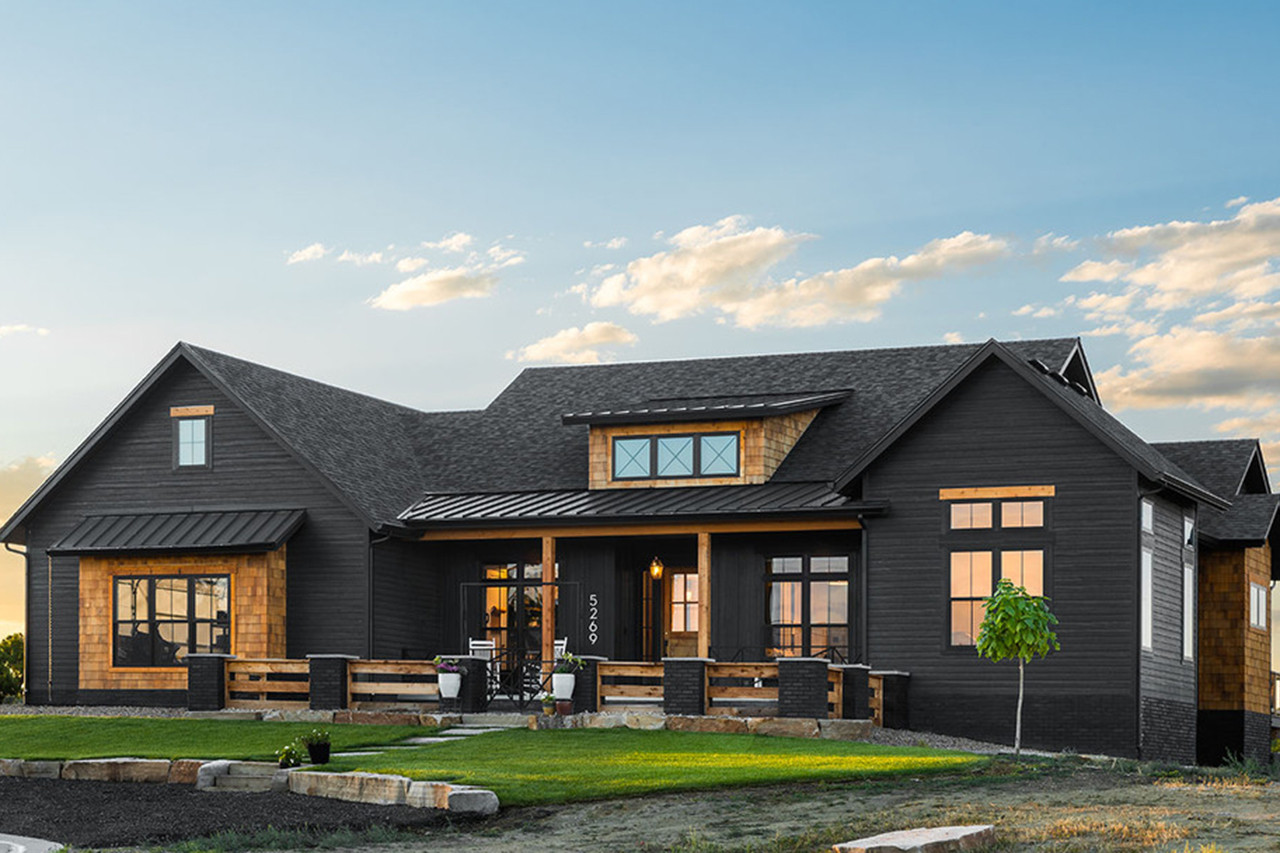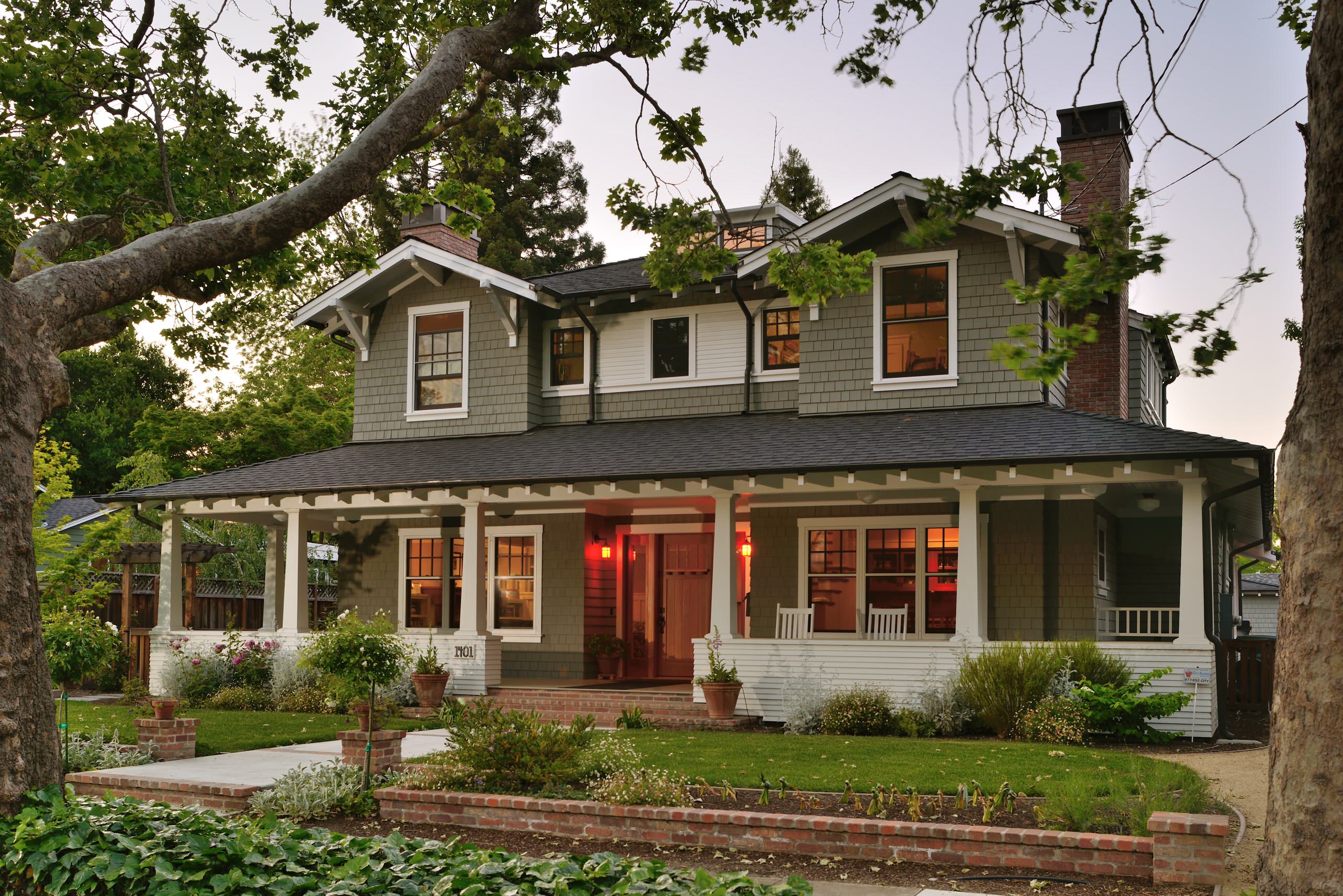The Ultimate Guide to Designing Your Dream craftsman style house
Wiki Article
The Role of Arts & & Crafts Architects in Elevating Architectural Solutions in Residential Design
Arts and Crafts architects considerably affect domestic design with their commitment to workmanship and sustainability. They focus on handcrafted information and all-natural products, which improve both looks and neighborhood identity. By involving clients in the style process, these architects develop one-of-a-kind space that reverberate with personal preferences. This approach questions about the future trajectory of property architecture and its potential impact on community dynamics. craftsman style house. What exists ahead for this classic style philosophy?
The Principles of Arts and Crafts Architecture
The essence of Arts and Crafts architecture depends on its commitment to workmanship and simpleness. This architectural movement arised in the late 19th century as an action to automation, emphasizing the worth of handmade details and natural materials. The principles of Arts and Crafts architecture focus on performance and harmony with the environment. Frameworks generally feature low-pitched roofing systems, broad eaves, and revealed rafters, advertising a feeling of unity with nature.Artisans played a considerable role in this style, usually integrating decorative components like stained glass, floor tiles, and woodwork, which mirror neighborhood craftsmanship. The color palette has a tendency to be natural and restrained, allowing structures to mix perfectly into their environments. Furthermore, the style urges open layout and communal areas, promoting a feeling of togetherness. Overall, the concepts of Arts and Crafts architecture celebrate the beauty of simpleness and the value of human link to both nature and area.

Lasting Practices in Residential Design
While the need for environmentally accountable living remains to grow, sustainable techniques in residential style have gotten considerable traction among architects and home owners alike. Architects are increasingly integrating energy-efficient technologies and lasting products into their styles, intending to decrease carbon footprints and improve power preservation. Methods such as passive solar layout, environment-friendly roofs, and rain harvesting systems are coming to be typical parts of modern residential architecture.Furthermore, the choice of locally sourced products minimizes transportation discharges and supports regional economies. Focus on natural light and air flow not only boosts interior air high quality however additionally decreases dependence on man-made lights and environment control systems. These sustainable methods reflect a commitment to maintaining the setting while providing house owners with comfortable, reliable living areas. As recognition of ecological problems expands, the integration of sustainability in domestic layout is positioned to end up being a specifying attribute of modern architecture, directed by the principles developed by Arts and Crafts architects.
Personalization and Customization in Home Style
Modification and personalization in home design have arised as essential trends in action to the growing desire for special living environments that show specific tastes and way of livings. House owners increasingly seek to customize look here areas that reverberate with their individualities, resulting in a much more meaningful link with their living rooms. craftsman style house. This activity urges architects to engage clients in the design process, fostering partnership that assures the final end result symbolizes the homeowner's visionAspects such as bespoke formats, customized products, and tailored coatings permit a varied array of expressions in residential layout. Arts and Crafts architects play a critical duty in this evolution, emphasizing craftsmanship and high quality. Their concentrate on integrating artistic components with functionality guarantees that each home is not just visually pleasing however likewise distinctively matched to the inhabitants' needs. imp source Subsequently, this focus on personalization improves the general residential experience, creating areas that are both individual and long-lasting.

The Effect of Arts and Crafts Architects on Neighborhood Appearances
As communities progress, the impact of Arts and Crafts architects considerably forms their visual landscape. By stressing handmade details, natural products, and typical construction methods, these architects develop homes that reverberate with their environments. Their designs commonly integrate regional vegetations, textures, and colors, promoting a feeling of harmony in between developed environments and nature.In addition, the Arts and Crafts motion promotes neighborhood identity through architectural connection. By motivating home owners to embrace similar style concepts, neighborhoods establish a natural personality that improves aesthetic appeal. This architectural uniformity not only enhances the aesthetic experience yet additionally infuses a feeling of pride among citizens.
The emphasis on sustainability and craftsmanship in Arts and Crafts architecture lines up with modern-day worths, making these layouts relevant in modern setups. Eventually, Arts and Crafts architects contribute significantly to the general appeal and cultural integrity of communities, leaving a long-term effect on their visual tradition.

Future Patterns in Arts and Crafts Architecture
With an increasing focus on sustainability and customization, future fads in Arts and Crafts architecture are poised to mix standard craftsmanship with modern-day advancement - craftsman style house. Architects are likely to prioritize environment-friendly materials, utilizing redeemed wood and all-natural stone to more helpful hints improve the sustainability of residential styles. The combination of smart home modern technology will certainly become typical, allowing for personalized living experiences without jeopardizing aesthetic integrityThe resurgence of artisanal methods will foster a renewed appreciation for handcrafted aspects, such as bespoke cabinetry and custom tile job. Future styles may additionally reflect an emphasis on community-oriented areas, encouraging interaction and link among homeowners. Exterior living areas will get prestige, perfectly integrating nature right into the home environment. As Arts and Crafts architecture develops, it will certainly continue to recognize its origins while adjusting to modern needs, creating harmonious spaces that reflect specific worths and lifestyles.
Regularly Asked Concerns
What Motivated the Arts and Crafts Motion in Architecture?
The Arts and Crafts activity in architecture was motivated by a response against automation, emphasizing handcrafted quality, natural products, and a go back to conventional craftsmanship, aiming to create unified, practical areas that commemorated artistry and originality.Just how Do Arts and Crafts Architects Collaborate With Customers?
Arts and crafts architects collaborate with customers via open discussion, prioritizing personal needs and visual appeals. They stress craftsmanship and sustainability, promoting a collaboration that incorporates the customer's vision with the designer's experience in style and materials.What Materials Are Commonly Made Use Of in Arts and Crafts Houses?
Common materials in Arts and Crafts homes include all-natural timber, stone, and brick, stressing workmanship and organic aesthetic appeals. These components develop a warm, inviting atmosphere, showing the movement's devotion to high quality and simpleness in layout.How Do Arts and Crafts Designs Improve Indoor Living Spaces?
Arts and Crafts layouts enhance indoor home by promoting all-natural light, open floor strategies, and handcrafted details. These elements cultivate a cozy, welcoming environment, urging a connection between homeowners and their atmospheres via thoughtful, useful visual appeals.What Are Some Famous Examples of Arts and Crafts Architecture?
Famous examples of Arts and Crafts architecture consist of the Gamble Residence, Greene and Greene's work of art in California, and the Robie House by Frank Lloyd Wright. These structures display handcrafted information and consistency with nature, defining the movement's essence.Report this wiki page